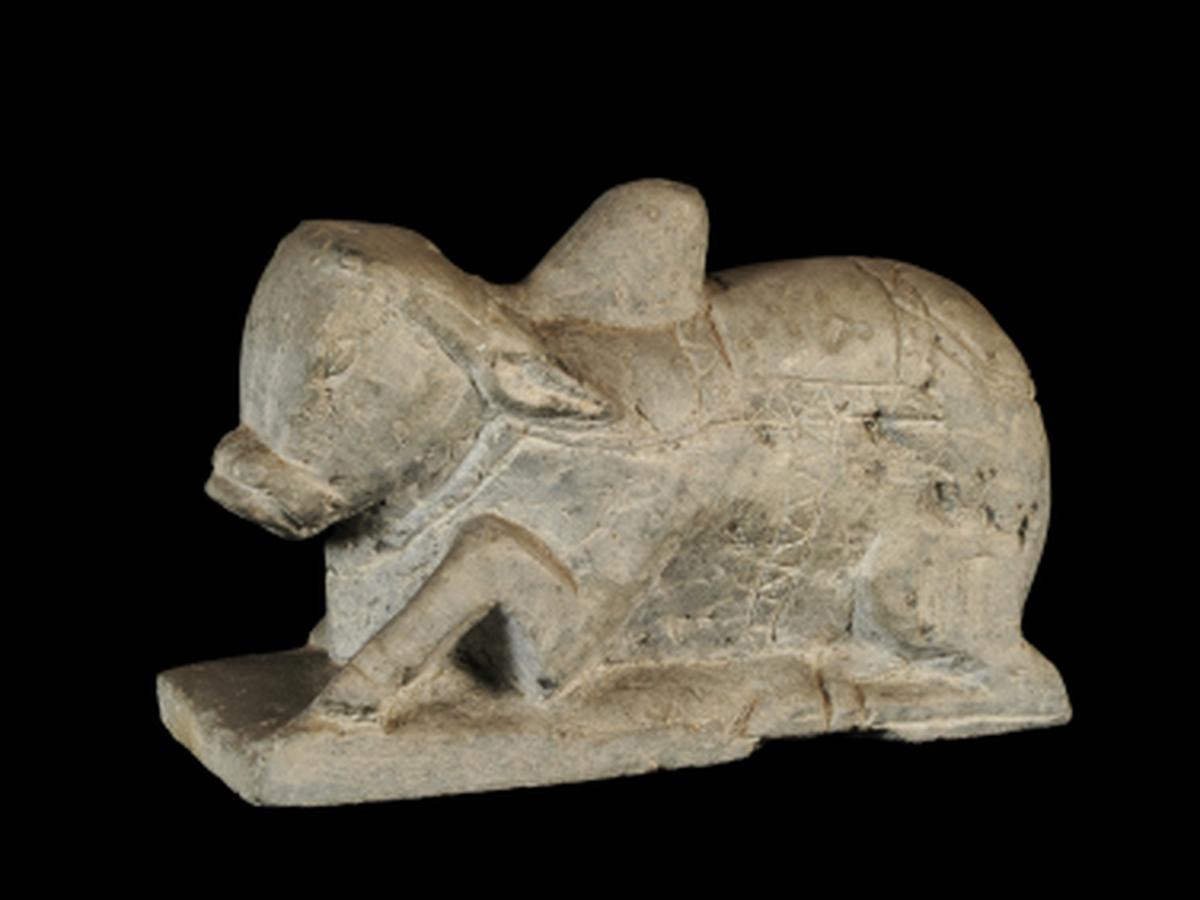State
Tribe Name
Art Type
short description
An wonderful illustration of tribal craftsmanship is the Effigy of a Bull: it is produced by Santal tribe, the major indigenous community of India mainly in the states of Jharkhand, Odisha, and West Bengal. The Indian Museum-Kolkata preserves this sculpture, carved with detailed precision, which is strongly imprinted in the socio-cultural fabric of the tribal community.
Thumbnail

Filter Postion
Right
Filter Background
Off
Theme
Filter Header Image

content
Image

description
An wonderful illustration of tribal craftsmanship is the Effigy of a Bull: it is produced by Santal tribe, the major indigenous community of India mainly in the states of Jharkhand, Odisha, and West Bengal. The Indian Museum-Kolkata preserves this sculpture, carved with detailed precision, which is strongly imprinted in the socio-cultural fabric of the tribal community.
The effigy represents a bull seated on flat base pedestal. The ears, horns, hump, four legs, and tail are distinctly highlighted. Besides, the body is enriched with engraved motifs which typify artistic elegance as well as tribal symbolism. In most of the tribal societies, the bull is indicative of power, fertility, and agricultural prosperity that these people strive within their livelihood and spiritual context. Presumably hewing using age-old methodologies and hand tools, the sculpture projects not only the bond between the Santal people and nature and animals but also their fine craftsmanship in wood or terracotta-carving. Such effigies are generally used in some ritualistic practices or as memorial objects. This object is witness to the Santals imparting a great legacy of folk art and craftsmanship for posterity through collections of national museums.
The effigy represents a bull seated on flat base pedestal. The ears, horns, hump, four legs, and tail are distinctly highlighted. Besides, the body is enriched with engraved motifs which typify artistic elegance as well as tribal symbolism. In most of the tribal societies, the bull is indicative of power, fertility, and agricultural prosperity that these people strive within their livelihood and spiritual context. Presumably hewing using age-old methodologies and hand tools, the sculpture projects not only the bond between the Santal people and nature and animals but also their fine craftsmanship in wood or terracotta-carving. Such effigies are generally used in some ritualistic practices or as memorial objects. This object is witness to the Santals imparting a great legacy of folk art and craftsmanship for posterity through collections of national museums.
Image Mode
landscape
promoted
On
Verified
Off
